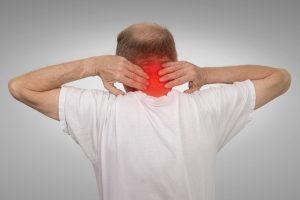Where does that pain in my back or neck now come from?
Spondylosis and spondylitis are often intertwined. Both disorders occur in the spinal column, which is at the same time the only similarity. Spondylosis is osteoarthritis of the spinal column. The intervertebral discs built from cartilage will wear out. Spondylitis is a disorder that affects one or more spinal vertebrae. Do you suffer from spondylosis or spondylitis? ‘Moving without pain’ put on this page the symptoms of both conditions for you in a row.
How is the spine built?
The back is formed in the third week after fertilization. At that moment, the upcoming mother does not even know she’s pregnant. In almost 4 days, the development of the back has been completed, which is a clear sign that this is considered a very important part of your body’s joints. The spinal column ensures that the internal organs are protected, and it is the attachment point of the ribs and of almost all muscles and tendons. The back itself is made up of 7 nerve vertebrae, 12 thoracic vertebrae, 5 lumbar vertebrae, 5 sacral vertebrae and a tailbone. An intervertebral disc is always placed between the vertebrae. These “resilient” shock absorbers consist of cartilage.
What is spondylosis?
In spondylosis, wear on the spinal vertebra occurs. If this affects the lower back, it is indicated as lumbar spondylosis. When the nerve vertebrae start to wear it is called cervical spondylosis. Spondylosis is common in people over the age of 50 years and upon aging, the jelly like core of the intervertebral discs may dry out. As a result, the cartilage also becomes drier and the discs become prone to wear. The intervertebral discs become thinner, so that the vertebrae come closer to each other. Over time, the movable facet joints – which connect the vertebra on the other side – are also affected by osteoarthritis. The body tries to stabilize the back by forming bone tissue at the abdominal sites. There are then protrusions that may put pressure on the nerves. This causes pain and sometimes tingling or numbness. As a result of osteoarthritis and pain, strain that is put on the back is different. Due to the altered position of the vertebrae, there is especially pain in the lower back. In cervical spondylosis the pain will occur especially in the neck and shoulders.
What are the symptoms of spondylosis?
In lumbar spondylosis you have pain and a stiff feeling low in the back, at the buttocks and at the back of the upper legs. As the disease progresses, you can move your back less well and the pain will increase. As a result, you will walk less well.
At cervical spondylosis, pain develops in the neck that increases very gradually. The neck becomes stiffer and can therefore be more difficult to move. Often this condition is accompanied by nerve irritations. In severe cases this may lead to paralysis.
Diagnosis and treatment Spondylosis
Spondylosis can be demonstrated by scans and X-rays. The bony protrusions on the vertebrae are clearly visible. In addition, an image of the degree of wear and tear can also be visualized. Sometimes it is necessary to apply a special X-ray technique to get a good picture of the back, which is usually myelography. In addition, a dye is injected to make the spinal cord and nerves visible. This way it can be determined which part of the back is affected by spondylosis precisely.
The pain can be well controlled with painkillers and inflammatory inhibitors. In addition, the GP may refer you to an exercise therapist or physical therapist. The disease cannot be cured, but a good treatment can reduce the symptoms. It is important to keep moving and to take good care of the body posture. Having neck problems, a neck collar can be customized which ensures stability. In case of serious complaints, surgery is sometimes carried out. A piece of the intervertebral disc is then removed or vertebrae are attached to each other.
What is spondylitis?
In this condition, there is no wear on the back. Spondylitis is associated with inflammation of the vertebrae and / or vertebral discs. This is usually caused by a bacterium that moves from another infection focus into the body to the back. This condition is called infectious spondylitis. As a result of inflammation, scar tissue is formed between the vertebrae. This is eventually transformed into bone tissue by the body. As a result, the vertebrae can deform and the spine can then grow askew. This condition is less common than spondylosis, but it may occur at any age. There are also several forms of spondylitis. The most famous is Spondylitis Ankylopoetica, or Bechterew’s disease. However, in the case of Bechterew’s disease there is an autoimmune disease as a cause of inflammation (i.e. no bacteria).
What are the symptoms of spondylitis?
The inflammation of the vertebrae and the vertebral discs causes pain. These can increase in intensity when moving. However, rest does not help to drive away the pain.
Diagnosis and treatment of spondylitis
Spondylitis can be demonstrated in the same way as spondylosis. In both conditions there is a bone formation between the vertebrae. This boning and the presence of inflammation can be visualized on X-rays or by scans. Usually, the specialist will conduct a blood test. It is not always possible to detect infection by a bacterium. This can be done by means of a biopsy by injection in the infected area. If the bacterium is found, the diagnosis is clear. The treatment consists of an infusion with a high dose of antibiotics. Sometimes the specialist considers it necessary to proceed to surgery.

Share this page
Tweet

Download for free the booklet ‘Moving without pain’ with a retail value of $6.75 / £4.95.
Any questions? Please feel free to contact us. Contact us.







